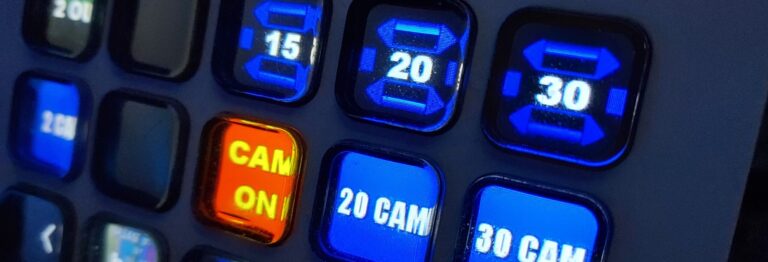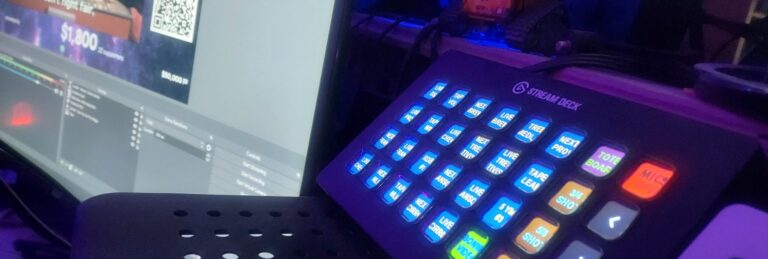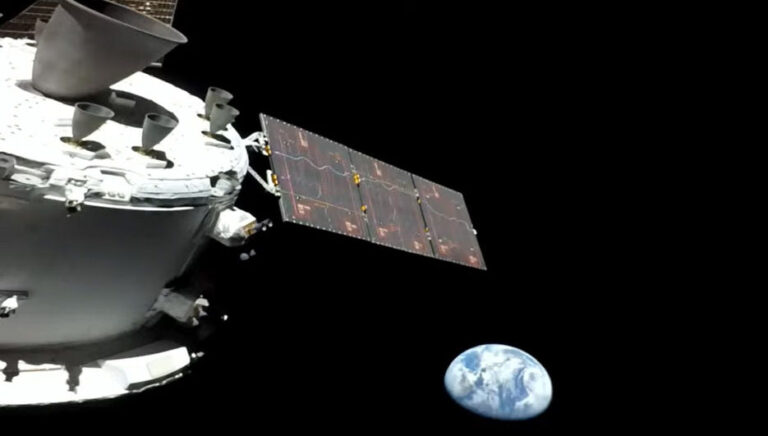So today I dragged out a few of the old Odyssey x00/x000 dedicated consoles from the early 70s. For those not in the know, these were relatively-low-price-point machines which usually played a Pong-like game and maybe one or two other variations on that theme dressed up as hockey or soccer, released between the original Magnavox Odyssey (1972, the first home video game) and the Odyssey2 (1978, still my favorite). Magnavox, in trying desperately the make the things seem futuristic to you, the consumer, called these games by names such as “Odyssey 100” and “Odyssey 4000” (really, if you think about it, they almost made the Odyssey2 sound like a step back in retrospect). I’m singling out three of these intermediate Odyssey consoles as historically important in PDF Level 2, and therefore I needed video…so therefore I needed to hook them up.
 Not so fast, though! Just hooking them up and recording their video wasn’t enough. Each of these machines generated its own internal sound – bleeps and bloops came from a little piezo speaker inside the plastic casing. Not only did I record the video straight to a DVD-R (through my infamous RF-to-digital rig, which was responsible for a heap of the first DVD), I also shut off everything else in the room – even the ceiling fan – and did sound recordings of each machine. I discovered that the Odyssey 100 and 500 had an identical bleep-and-bloop generator (that’s a highly technical term there), so I captured “the perfect beep” from one recording and manually synced it up with the video. The Odyssey 4000 produces a variety of bleeps and bloops, so it’ll be a slightly more complicated process, but the point of all this is that I want the resulting video on the DVD to present the true experience – both sound and picture – of what you’d see and hear while playing these games.
Not so fast, though! Just hooking them up and recording their video wasn’t enough. Each of these machines generated its own internal sound – bleeps and bloops came from a little piezo speaker inside the plastic casing. Not only did I record the video straight to a DVD-R (through my infamous RF-to-digital rig, which was responsible for a heap of the first DVD), I also shut off everything else in the room – even the ceiling fan – and did sound recordings of each machine. I discovered that the Odyssey 100 and 500 had an identical bleep-and-bloop generator (that’s a highly technical term there), so I captured “the perfect beep” from one recording and manually synced it up with the video. The Odyssey 4000 produces a variety of bleeps and bloops, so it’ll be a slightly more complicated process, but the point of all this is that I want the resulting video on the DVD to present the true experience – both sound and picture – of what you’d see and hear while playing these games.
This is important because the Odyssey x00/x000 consoles – with only a couple of models excepted – all have analog components, and therefore can’t be emulated, strictly speaking: there’s no chip to emulate, just a rat’s nest of discrete logic wiring. This point was made to me very thoroughly when I plugged in the Odyssey 500: the analog circuit that generates the vertical lines that form the boundaries of the screen (and the center “net” line for the tennis/pong game) has gone way screwy on me. The vertical lines have groovy waves going through them, which also distort everything else on the screen – any video I gathered would’ve been useless. Fortunately, the early Odyssey x00 consoles had a knob that could be used to literally yank the center line off the screen completely. So that’s what I did – without that line on the screen to warp everything, the game appeared perfectly normal. I’ll reproduce the missing center line with the Avid’s graphics tools and it’ll look like it’s supposed to. That experience reminded me of why it’s really important to get this stuff right – because these machines won’t always be working. Compared to the video games you play on your Xbox 360 or Wii today, of course, these old Pong variants are cave drawings. But you know how excited real archaeologists get about cave drawings, don’t you? It’s history. In its own way, so is this.
I’m hoping to have the 1970s done by the first of the year, but I keep finding so much neat stuff to add – old Odyssey consoles, Studio II and Astrocade and Channel F games, commercials for stuff like Blip and Merlin – that it’s dangerously tempting to just make this one “Phosphor Dot Fossils: The ’70s.”










+ There are no comments
Add yours